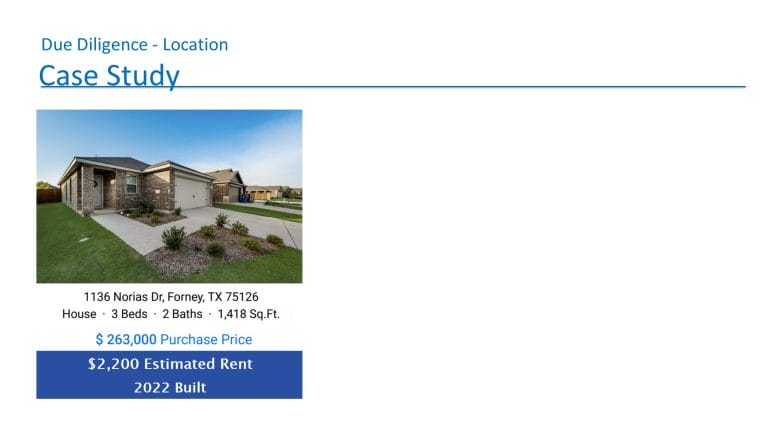Analyzing real estate locations for savvy investors in 2025
When you’re diving into real estate investing, one of the most critical steps is analyzing real estate locations effectively.
As a cyberpunk realtor under the neon lights of the Grand Prix Realty, you know—better than most—that data is king.
The real estate market can feel like a sprawling, dystopian landscape with countless variables to consider.
Luckily, it’s never been easier to harness the power of online tools to decode those variables.
In this part of our guide, we’ll slice through the noise and pinpoint the best online data sources for analyzing every corner of a real estate location.
The Cyberpunk’s Toolkit for Analyzing Real Estate Locations
Finding the right real estate location can feel like hacking into the matrix, but the key is in choosing the right tools.
The internet is packed with resources that offer treasure troves of data, making it easier for real estate investors like you to assess the viability of an area remotely.
Let’s run through different platforms that serve up the data you need to make savvy investment decisions.
Harnessing Niche.com for Comprehensive Insights
The first tool every slick investor should have in their arsenal is Niche.com.
This platform is designed to give you a 360-degree view of any area, from school quality to housing trends, to neighborhood safety—all served up with a slick interface that’s easy to navigate.
Niche.com is like the sophisticated AI you consult when you need high-level insights into demographics, crime rates, and property values. Just input a city or zip code like a pro hacker entering a command line, and voila, the data pours out.
Whether you’re zooming in on a suburban enclave or a downtown stretch, this platform lets you dig deeper into the numbers that matter for real estate investing.
BestPlaces.net: The Crime-Fighting Sidekick
Next up in your digital utility belt is BestPlaces.net. Think of this site as your trusted sidekick specializing in crime and safety statistics—the Robin to your Batman.
While Niche.com provides a top-level overview, BestPlaces.net zooms in on crime data, offering an in-depth look at trends in vandalism, violent crimes, and overall safety.
This tool is crucial for investors who want to ensure that their real estate locations are not only lucrative but also safe for future tenants.
It’s like peering into the dark alleys of your chosen neighborhood without leaving your plush leather hover-chair.
City-Data.com: Your Deep Dive into the Numbers
Finally, we have City-Data.com—the veteran of real estate analysis tools, known for its raw, unfiltered data.
This platform excels in giving investors detailed demographic breakdowns, property values, and crime statistics.
It’s where you go when you need to corroborate the more polished metrics from other sources.
City-Data.com is more like the gritty, rough-around-the-edges detective in our story, uncovering the hard truths about your potential real estate locations.
Use it to verify that what looks good on one site checks out across the board.
The Power of Multiple Sources: Cross-Referencing Data for Accuracy
In the world of analyzing real estate locations, you don’t want to rely on just one source for your intel.
Think of it like cracking open a hard drive; you’re pulling data from multiple sectors to piece together the whole picture.
By using a combination of Niche.com, BestPlaces.net, and City-Data.com, you can cross-reference the numbers, ensuring accuracy and getting a well-rounded view of your potential investment.
Each of these tools provides a different facet of the real estate landscape, blending together to create a clear and detailed image.
Trust me, I’ve seen too many investors lose out by putting all their chips on one data source—don’t make the same mistake.
So, strap into your digital command center and start exploring.
Mastering these tools will push your abilities and transform you into a data-driven real estate investing powerhouse.
It’s how you stay ahead of the curve and make smart, informed decisions in any market.
And remember—information is power.
The more you know about analyzing real estate locations, the better equipped you are to navigate the fast lanes of the real estate game.
Unpacking Demographics: More Than Just Numbers
When analyzing real estate locations, demographics are the DNA of the neighborhood—those strings of data hold the key to understanding the vibrant life within a community and the potential it harbors for real estate investors.
Demographics tell you who lives in the neighborhood, their age, income levels, education, and much more.
It’s not just about knowing the numbers; it’s about seeing the bigger picture they paint.
For example, a neighborhood populated by younger professionals might signal a demand for rental properties, while an area with older residents might be more stable but appreciate at a slower pace.
Interpreting these subtle dynamics is essential for grasping whether a location aligns with your investment goals.
Income Levels: Predicting Market Stability
Income levels in a neighborhood serve as a pulse check on economic health.
When evaluating real estate locations, consider the median household income because it directly influences the kind of homes that will sell or rent successfully in the area.
Locations with higher income levels often mean a greater likelihood of homeownership, which can stabilize property values over time.
However, mixed-income neighborhoods might offer better rental opportunities, especially if the area is undergoing gentrification.
Don’t just look at the raw numbers; dive deeper to understand how income trends over time can affect future market conditions.
For a precise analysis, cross-reference income data from Niche.com and City-Data.com—this will help you decode any inconsistencies and refine your investment strategy.
Crime Rates: Safeguarding Your Investment
Crime statistics are one of the first lines of defense in protecting your investment.
A real estate location might tick all the boxes in terms of amenities, schools, and job opportunities, but if it’s crime-ridden, the risks could outweigh the benefits.
When you look at crime data, don’t just fixate on the overall numbers—delve into the types of crimes prevalent in the area.
Violent crimes such as assaults or robberies can drive away potential tenants and severely impact property values, while property crimes could signal underlying socioeconomic issues.
To get a well-rounded view, use multiple sources like BestPlaces.net for broader crime trends and City-Data.com for a more granular breakdown.
Both platforms allow you to compare the crime rates to state and national averages.
What’s key here is to look at trending data—Is the crime rate rising or dropping? Areas with declining crime rates might not only be safer but also more attractive to future buyers, driving appreciation potential.
Always consider crime data when analyzing real estate locations because it plays a crucial role in determining both the immediate and long-term value of your property.
Property Values: Calculating Long-Term Gains
The cornerstone of any real estate investment is understanding property values within your chosen location.
For a savvy investor, these are not just numbers; they’re the indicators of potential profit margins or pitfalls.
Analyzing real estate locations means evaluating both the current property values and the trajectory of those values over time.
Are properties appreciating? If so, at what rate? Identifying neighborhoods with consistent, steady growth can lead to safer, more predictable returns, while areas with rapid increases might indicate a market bubble—flashy, but possibly short-lived.
City-Data.com is a powerhouse for raw property value data, while Niche.com offers a polished overview that integrates factors like school ratings and employment opportunities.
Together, these tools give you a balanced perspective: are people buying to live here, to invest, or even to flip properties? Understanding the layers of data behind property values will illuminate whether a location is primed for growth, stagnation, or decline.
It’s all about spotting the trends early and positioning yourself for maximum ROI.
Racial and Cultural Composition: Diversity Equals Stability
Understanding the racial and cultural makeup of a neighborhood can add another layer to your investment strategy.
Diverse neighborhoods often bring together a variety of income levels, education backgrounds, and industries.
This melting pot not only contributes to a vibrant community atmosphere but can also provide economic stability.
In times of market downturn, diverse areas have been shown to bounce back more quickly.
When analyzing real estate locations, it’s important to consider how diversity might influence demand for different kinds of housing—from multi-family units to single-family homes.
Use Niche.com and City-Data.com to compare the racial and cultural metrics. Look for areas with a mix that seems sustainable and reflective of the broader regional trends.
These neighborhoods often attract a steady influx of new residents, ensuring long-term rental demand and property value appreciation. This cultural synthesis can also translate to a richer local economy, adding another layer of security to your investment.
So, as you continue your journey through the digital jungles of real estate data, remember: the key to successfully analyzing real estate locations lies in understanding the people behind the numbers.
Demographics, crime rates, and property values don’t exist in a vacuum—they are interwoven, and together they tell a story. Understanding this story is essential for making wise and informed investment decisions.
Blending Data and Local Expertise: The Investor’s Winning Formula
When it comes to analyzing real estate locations, there’s no substitute for the powerful combination of data-driven insights and boots-on-the-ground expertise.
While the internet opens up a wealth of information—giving you a panoramic view of any neighborhood in the blink of an eye—human insight still stands as a cornerstone for making informed real estate investment decisions. It’s like using an AI-powered drone to survey a landscape before sending in your best field agent for a closer look.
The Role of Local Expertise in Real Estate Investing
Your online research will get you far, but it’s the local experts who give you the insider’s scoop.
Think of real estate agents, property managers, and even long-time residents as your secret operatives.
They know the lay of the land like the back of their hand; they can tell you the truths that metrics alone often miss—like an upcoming zoning change or that neighborhood gossip about a new public transit hub being planned.
These elements can be game-changers in the world of real estate investing, tipping the scales between a good deal and a great one.
Collaborating with Property Managers: Your Local Data Hub
Property managers are a goldmine of local knowledge, especially when you’re zeroing in on a specific real estate location.
They provide on-the-ground insights into rental markets, tenant behaviors, and even the seasonal fluctuations in a neighborhood.
For instance, a property manager might reveal that an area with modest rental rates suddenly sees a spike in demand during the summer when a local tech company brings in interns.
This kind of information allows you to make portfolio decisions that not only align with general trends found online but also take advantage of hyper-local opportunities.
The Importance of Connecting with Local Agents
Real estate agents, much like property managers, can offer critical, localized advice that you won’t find online.
Agents often have their finger on the pulse of community sentiment, knowing which neighborhoods are quietly becoming hot due to new amenities.
They’ll have an acute understanding of buyer psychology in your chosen area, helping you anticipate which real estate locations are likely to see increased demand.
Moreover, agents frequently have access to off-market deals—opportunities that would never even make it to an online listing platform.
Your Digital and Local Network Synergy
Creating synergy between your digital data sources and local expert networks is the ultimate strategy for real estate investing.
Consider your online tools as the reconnaissance phase of your investment strategy. They will help you identify potential real estate locations worth your attention. But, once a location catches your eye, it’s time to bring in the human element.
Discuss the data with local property managers or real estate agents, and factor their insights into your decision-making.
This hybrid approach ensures that your investment is rooted in both metric reliability and ground-level accuracy.
The intersection of online data and local expertise is where truly informed decisions are made.
Analyzing real estate locations with this dual-lens approach allows you to tap into the best of both worlds—comprehensive data analysis and deep local wisdom—increasing your chances of not just making a profitable investment, but making one that holds strong for years to come.






